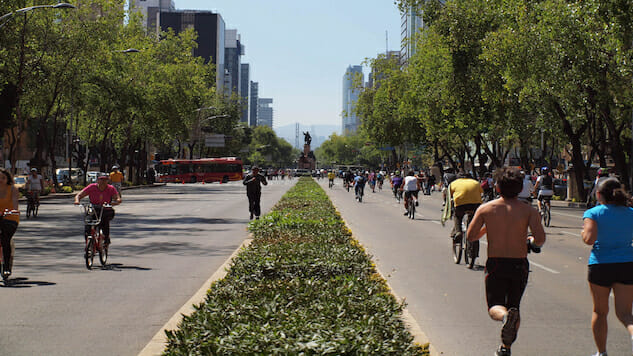Mexico City Meltdown: How to Maintain a Running Habit in a Megalopolis

Photo by Alejandro, CC-BY
As one of the biggest cities on earth, with all the trappings of a modern day megalopolis—traffic, pollution, overpopulation, etc.—Mexico City may seem like a strange place to be a runner. But for those hardcore pavement pounders who can’t miss a workout, this city is surprisingly friendly for those who know their way around the chaos of this concrete jungle, with a plethora of parks and green spaces not seen in most other megacities, as well as the advantage of altitude (7,382 feet) for intense cardio training. With a little bit of foresight, creativity and the spirit of adventure, Mexico City offers almost unlimited options for people who love to run and are willing to work for it. But how can you juggle all the challenges of running in this metropolis in order to maintain your best performance and health? Luckily we have compiled a list of things you can do to see Mexico City on your feet.
1. Avoid Pollution
You might be thinking, “but isn’t Mexico City super polluted?” The answer isn’t as straightforward as yes or no. During the 1980s and early 1990s the Mexican capital was ranked the most polluted city in the world. And just last year it was ranked as the city with the worst traffic. being said, during the 21st century the city has taken drastic measures to cut pollution and has become a world leader in curving pollution levels. Still, though, pollution here is a real problem. Luckily, you can take measures to protect yourself. First, we recommend running in the morning when pollution levels are at the lowest. Second, run in the parks where trees and greenery produce clean oxygen for you too breathe. You can consult pollution levels on the city government website. If your location on the map says “buena” or “regular” you’re probably in the clear for a run, just avoid cardio when pollution levels get above “mala.” Some athletes here choose to wear pollution masks, which may be a good idea if you’re especially sensitive or have to exercise during peak pollution times.
2. Stay Out of the City Center

Photo by Devon Van Houten Maldonado
-

-

-

-

-

-

-

-

-

-

-

-

-

-

-

-

-

-

-

-

-

-

-

-

-

-

-

-

-

-

-

-

-

-

-

-

-

-

-

-









































